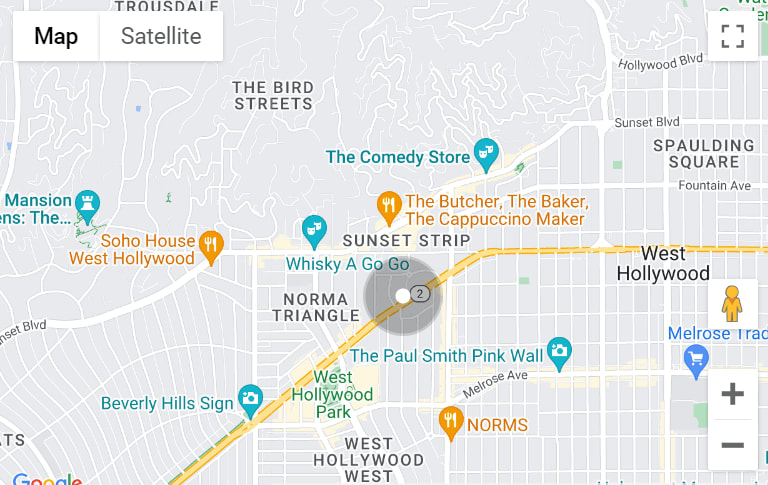
-
Compass
1133 Minnesota Avenue
San Jose, CA 95125
CA DRE# 01817881
-
Tony Odom
Vacancies in rental properties are inevitable. Most investors aim to keep their vacancy rate as low as possible -- after all, a vacant property isn't making money.
Knowing how to calculate a property's vacancy rate and understanding how the vacancy rate affects the property's return is imperative.
What is the vacancy rate of a rental property?
The vacancy rate of a rental property can be calculated in two ways:
There are three types of vacancy rates that are commonly used with rental properties:
The physical vacancy rate is the amount of time the unit(s) remained vacant over the past year, taking into account the number of units currently vacant in real-time. We'll get into the exact details shortly.
The economic vacancy rate is the total amount of rent lost when the property was vacant in relation to the total gross potential rent of the property. This is often more useful because it calculates the vacancy rate based on income rather than time.
Physical vacancy and economic vacancy typically show similar percentages but can differ if you own multiple units.
The market vacancy rate is the average vacancy rate by property type. This helps investors identify the likely vacancy rate for an asset class and determine if a property is performing at, above, or below average.
The U.S. Census Bureau conducts a survey on residential vacancy rates each year, showing an average vacancy rate of 6.8% for Q2 of 2019 for residential rentals. Commercial real estate vacancy rates by property type can be found on various industry websites, including Situs, National Association of Realtors, or CBRE, Inc.
he lower the vacancy rate, the higher-performing a property, and in turn, the more valuable it is. Conversely, the higher the vacancy rate, the less valuable the investment.
Why the vacancy rate of a rental property is important?
When evaluating a rental investment, it’s helpful to know the market’s average vacancy rate so you can compare your property’s current performance. Sometimes poorly managed or poorly maintained properties have a higher vacancy rate than the market average. For a prospective buyer, this presents an opportunity to add value by decreasing the vacancy rate, increasing profitability.
I recently evaluated a storage facility that had a nearly 50% physical vacancy rate while its nearby competitors were seeing an average of 10%. Knowing the current vacancy rate and how it related to the average market vacancy rate allowed me to evaluate the property based on its current performance and determine the future potential value of the property.
Rental properties inevitably become vacant at some point, which affects the overall performance and return on investment. Knowing the average vacancy rate, economic vacancy rate, and physical vacancy rate of the property beforehand lets you account for any potential loss in rental income and determine your overall return more accurately.
Calculating the vacancy rate of a rental property
Multifamily properties typically use a vacancy rate that depicts the number of vacant units in real-time. Here's how to calculate the current physical vacancy rate of multifamily properties:
For example, if an apartment with 10 units has two vacant units, you would multiply 2 x 100, giving you 200. Then divide by 10 units for a 20% vacancy rate.
Single-family properties or other rentals that have one unit for rent typically use an averaged vacancy rate. Here's how to calculate the physical vacancy rate for a single-family rental:
For example, if the property was vacant for three weeks, you would divide that by the number of weeks in a year (52) for a physical vacancy rate of 5.8%.
Let's look at the economic vacancy rate next:
Let's say a single-family home has the potential to collect $1,000 a month. The gross potential rent would be $12,000. The property was vacant for three weeks or 21 days. That's 70% of a month. 70% of the monthly rental rate of $1,000 equals $700 lost. Divide the amount lost by the gross potential rent. $700/$12,000 gives you a 5.8% economic vacancy rate.
Several factors can affect vacancy rates, such as:
Vacancy rates often increase during economic recessions due to lack of demand, poor job and population growth, and oversupply. If market conditions are favorable and demand for your property type is high, but you're still seeing higher-than-average vacancy rates, you may need to lower your rent or improve your property to meet the standards of your competition.
It’s important to price your property according to market conditions and set a realistic rent based on its features and condition. In addition, maintaining the property and managing it well will keep tenants happier and reduce turnover.
The richest in the world have made their fortunes in many ways, but there is one common thread for many of them: They made real estate a core part of their investment strategy. Of all the ways the ultra-rich made their fortunes, real estate outpaced every other method 3 to 1.
If you, too, want to invest like the wealthiest in the world, we have a complete guide on what you need to take your first steps. Take the first step toward building real wealth by getting your free copy today. Simply click here to receive your free guide.
By Liz Brumer
Liz Brumer-Smith is a real estate investor.